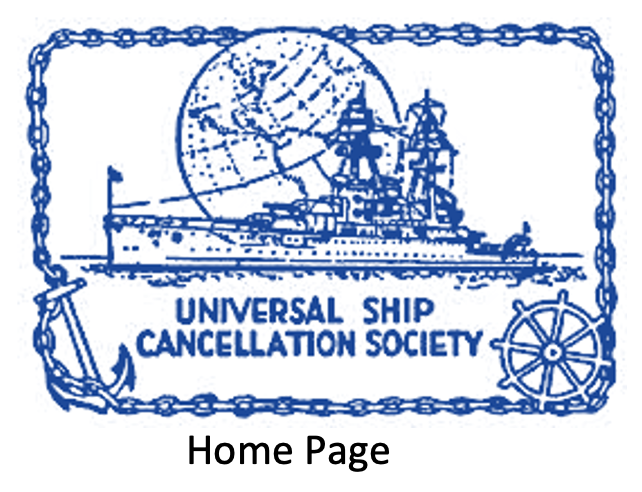What is a Postmark?
The first post offices aboard U.S. Navy ships opened in 1908 and the first cancels bearing ship names were used in this same year. It was an Act of Congress that was approved May 27, 1908 and implemented by Navy Department General Order #74 dated June 27, 1908 that put post offices aboard United States Navy ships. Congress was acting on the need for sailors to have a reliable means of posting letters while sailing around the world as part of the Great White Fleet. The first post office to be authorized was for the battleship USS Illinois, effective the day after she left San Francisco as part of the Great White Fleet tour.
CLICK for 1908 Order Authorizing Post Offices on Ships (PDF)
A system for classifying navy ship cancels was devised by LCDR Francis E. Locy, Medical Corps, U.S. Navy in the late 1920’s. (Note that Locy is pronounced with a soft “c” like “Lucy.”)
This system has been periodically updated as new cancel types are issued. It is the standard for the classification of ship cancels. The Locy System consists of a basic set of illustrations of the general form of each cancel and a list of code letters that are used to describe variations from the “standard” format of each cancel.
In the most simple form, a cancellation consists of a dater circle, (often called the “dial”) at the left, with the ship’s name molded into it around the circle, and slots in the center into which slugs can be inserted for the date. To the right are bars or other devices to deface the stamp so that it cannot be used again. These devices are called “killers,” and are often straight lines. Most of the variations are changes or rearrangements of the wording the dial, or variations in the killer.
Neither the Postal Service nor the Navy makes canceling devices. All are made by private firms and the contract to make new cancels is changed periodically to new manufacturers as new bids are received. Many variations described by the Locy System are considered unimportant by the manufacturer, Post Office and Navy and are probably nothing more than carelessness on the part of the person who made it.
It is important to understand that the Locy System is only intended to classify government issued devices. Many privately-made cancels have been used aboard Navy ships in the past close to 100 years, but all are relegated to a generic grouping called “fancy” cancels, even though many are rather plain.
About the Locy System and Illustrations
For the full description of the Locy System, numerous examples, and a listing of known cancel types for each ship, see the Catalog of United States Naval Postmarks (ISBN 0-9657316-0-X) published by the Universal Ship Cancellation Society. This book can be purchased from the USCS at USCS Publications Online Storeon this web site.
About LCDR Francis E. Locy Story and Photos
Locy published an article about his classification system in “The American Philatelist” in the February 1929 issue. “The American Philatelist” is the official journal of the American Philatelic Society. This is the article that became the foundation for the Locy System as it has been maintained since 1929.
Link to Locy Article in the American Philatest (PDF)
Incredible as it may seem today, while naval cancels appeared in 1908, little was written or known about them and there were few collectors of naval cancels until the appearance of Locy’s article and others that appeared in the same time period. The following articles are all referenced in Locy’s 1929 article. First was an article also in “The American Philatelist”, “Battleship Cancellations” by Dr. William Evans, August 1927. Also to appear was “Battleship Cancellations” by William Hornbeck in “Philatelic Opinion” via “The Stamp Collector’s Magazine, February 1928. An attempt to classify cancellations was made by Dr. Evans in “The Southern Philatelist”, April 1928 in an article titled “United States Navy Cancellations.”
